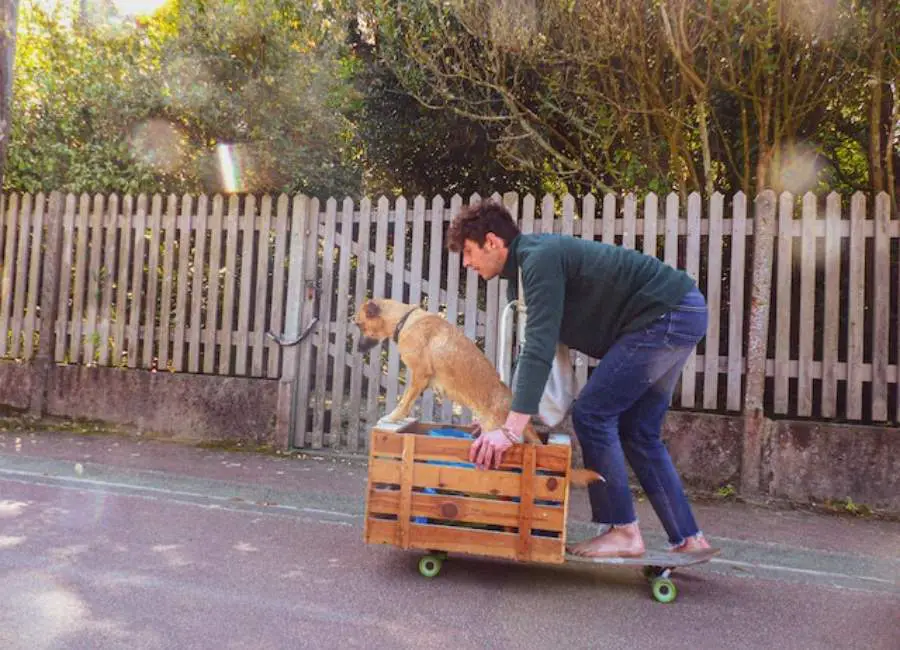Transition Your Dog From Crate To Free Roaming

Transitioning your furry friend from a crate to free roaming can be a big step, but it’s an important one to take for both you and your dog.
Of course, it’s not something that can be done overnight – it takes time, patience, and a lot of positive reinforcement.
In this blog post, we’ll go over some tips and tricks to help make the transition as smooth as possible.
Transition Your Dog From Crate To Free Roaming
Here are the step-by-step processes that you can follow to help make the transition as smooth as possible for both you and your furry friend:
1. Assess the dog’s readiness for free-roaming
Examine your dog’s readiness for free-roaming before you start the transfer procedure.
Ensure sure your dog is trained to use the restroom and has an acceptable bladder hold time.
2. Start Slowly
Starting cautiously is the first step in letting your dog go from a box to free roaming.
Avoid rushing because doing so could make your dog uncomfortable and stressed.
Start by letting your dog out of the crate for brief intervals, then gradually extend the duration as your dog becomes more accustomed to it.
3. Create a designated safe space
Pick a location in your house or environment where your dog is free to wander.
This area needs to be somewhat compact, manageable, free of any risks, and reasonably small as well.
Also, make sure to provide a secure area where your dog can go to rest and unwind while he is not in the crate.
It could be a certain spot in the room or a dog bed that your dog is accustomed to.
Ensure that it is cozy, peaceful, and free from any distractions.
4. Increase time spent in the area
Gradually increase the amount of time your dog spends in the designated area.
Short bursts of time in the specified safe area should be allowed to begin with.
As your dog becomes more at ease and familiar with the area, you can progressively increase the amount of time.
5. Use Positive Reinforcement
Use positive reinforcement to reward good behavior as you start to move your dog from the crate to free roaming.
When your dog behaves properly, such as when they sleep in their allocated safe space or refrain from destructive activities, reward them with goodies, praise, and attention.
6. Supervise Your Dog
When your dog is not in the crate, you should always keep an eye on them.
This will enable you to step in if your dog starts to exhibit unwelcome behaviors or becomes anxious.
If your dog begins to chew on your furniture or exhibit other damaging tendencies, keep an eye on them and redirect their focus.
7. Gradually Increase Freedom
Increase your dog’s freedom little by little as they get accustomed to it.
Let them wander around the house or room as they choose, but keep an eye on them and refocus their attention if required.
8. Maintain Consistency
While moving your dog from a crate to free-roaming, consistency is essential.
Maintain a regular schedule and make sure your dog has lots of chances to rest and unwind.
Continue to offer rewards for excellent behavior, and as necessary, step in to stop undesirable actions.
9. Be Patient
Keep in mind that a dog must be gradually transitioned from a crate to free-roaming, which calls for patience and persistence.
Do not rush the process or lose patience if it takes your dog longer than expected to acclimate.
Your dog will eventually develop a sense of security and ease in their new free-roaming surroundings with practice.
Learn more about training your dog not to run away.
FAQs
When is the right time to transition my dog from a crate to free roaming?
When to move your dog from a box to freedom roaming has no established timetable.
It’s crucial to take your dog’s behavior and training level into account.
When you first let your dog out of the crate while you are home, gradually extend the time they are outside and watch how they behave.
You can think about letting them go free while you’re gone if they routinely behave well and aren’t naughty or prone to accidents.
Should I leave my dog with access to all rooms in the house while free roaming?
It’s not advisable to give your dog unrestricted access to every area in the house when transitioning, especially in the early stages.
Instead, use baby gates or other obstacles to restrict dogs’ access to specific rooms or parts of the house.
This will lessen the likelihood of mishaps and damaging activity.
Learn more about what you can do if your dog runs away.
Is it okay to leave my dog free roaming while I’m at work?
It could be acceptable to let your dog walk freely while you’re at work if they routinely exhibit good behavior and are not prone to mischief or accidents.
Nonetheless, it’s crucial to watch their behavior and gradually increase the amount of time they spend outside the box.
A comfortable location to rest and access to water should also be provided for your dog while you are away.
What if my dog has accidents or chews on things when free roaming?
It’s crucial to reevaluate your dog’s degree of training and behavior if they have accidents or gnaw on things when wandering free.
To restrict children’s access to specific sections of the house, think about reintroducing crate training or utilizing baby gates.
Ensure your dog receives adequate mental and physical stimulation to curb destructive behavior.
How can I help my dog feel comfortable with free roaming?
Provide a secure area for your dog to wander in the beginning.
Everything that your dog might be enticed to chew on or destroy should be removed from the environment.
Baby gates can also be used to restrict your dog’s access to specific rooms in the house.
To keep your dog active and mentally stimulated, give them plenty of toys and chew items.
Learn more about punishing your dog if they run away.
Conclusion
In conclusion, transitioning a dog from being crated to free roaming requires patience, consistency, and positive reinforcement.
Start with short periods of confinement, introduce a designated safe space, provide plenty of exercises, and use positive reinforcement.
Gradually increase the size of the confined area, supervise your dog, introduce them to other areas of the house, reinforce good behavior, correct undesirable behavior, and be consistent.
With time and patience, your dog will be able to roam free comfortably and safely.
